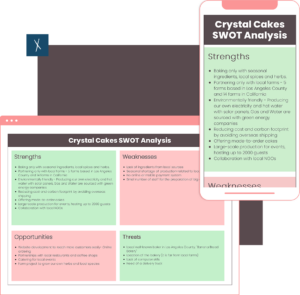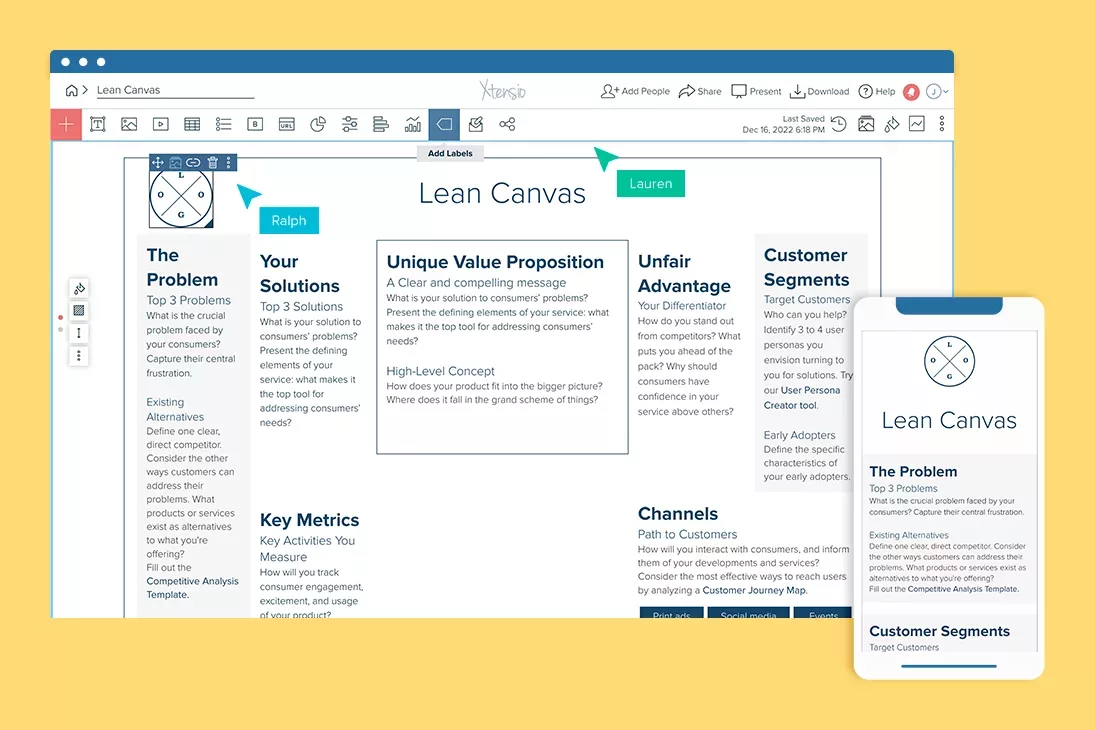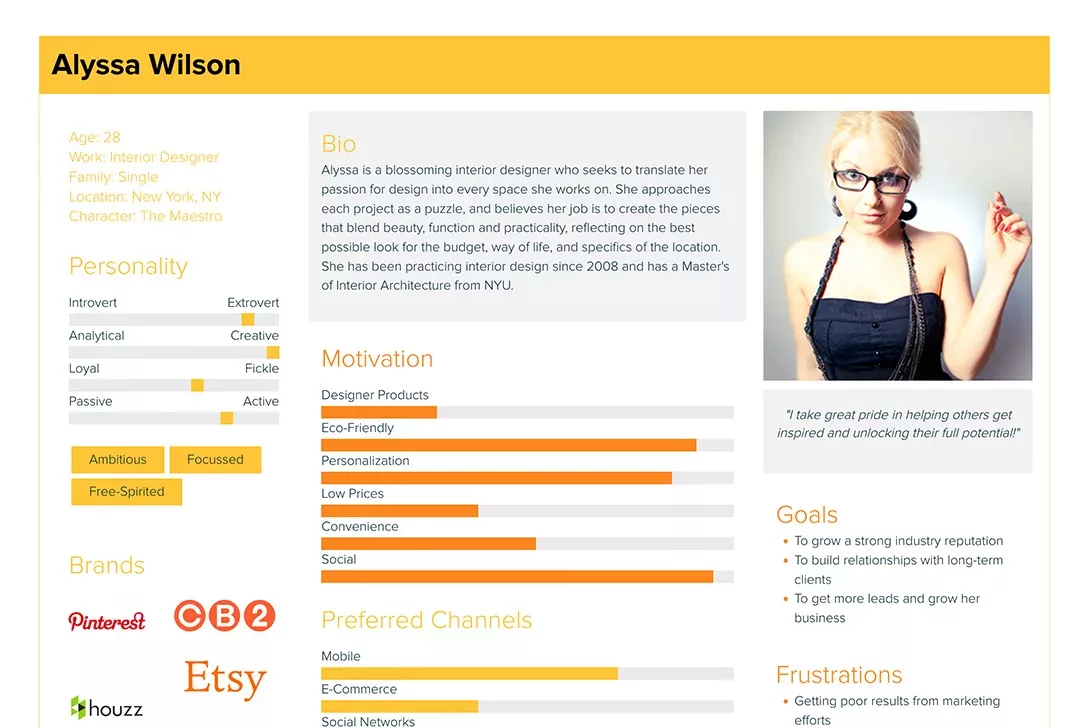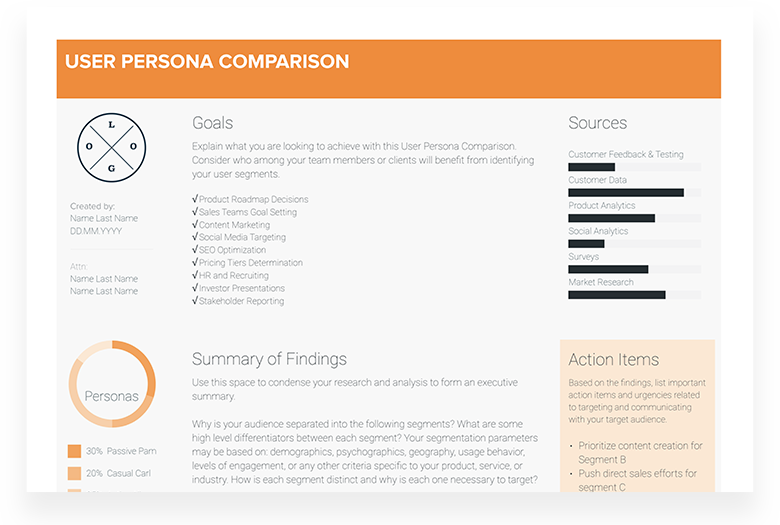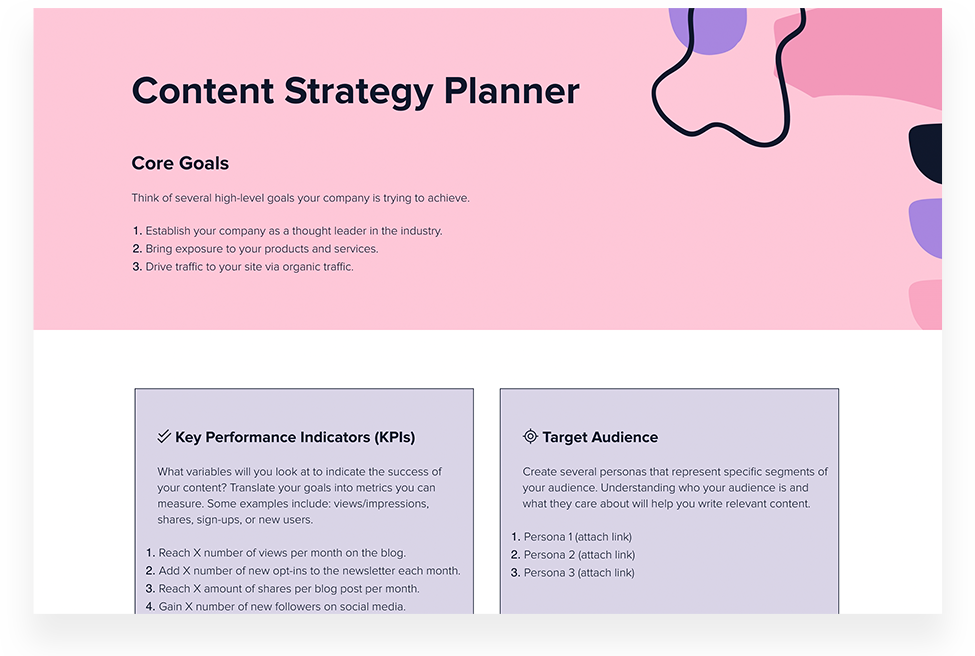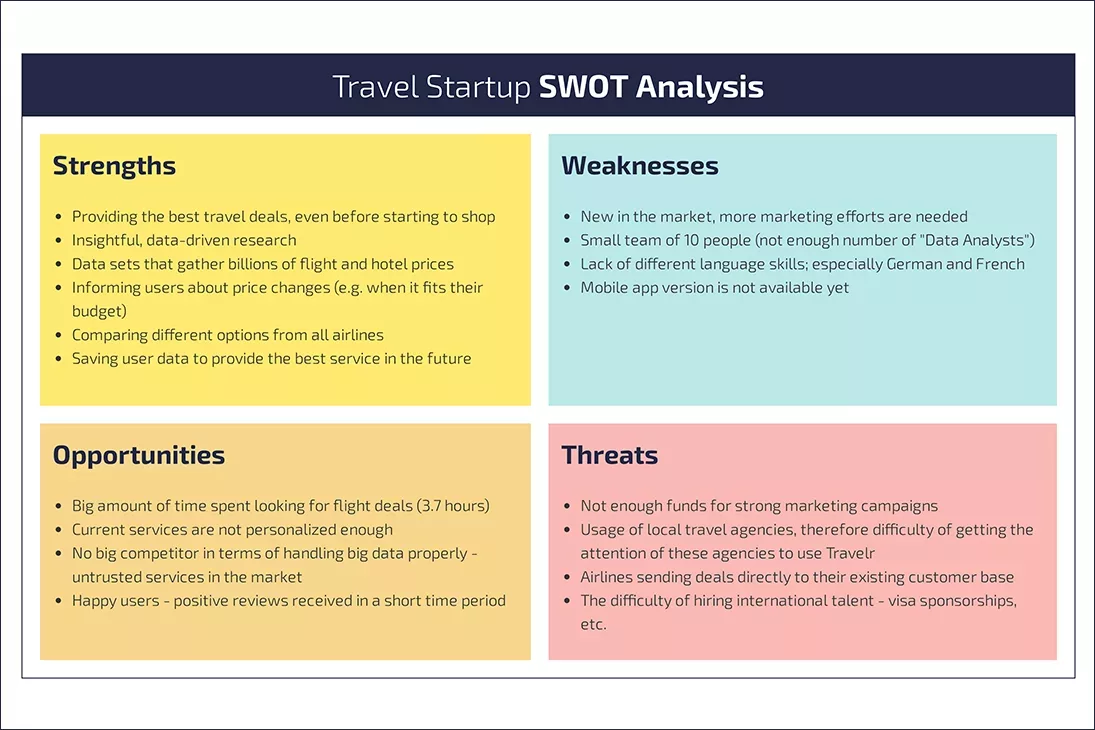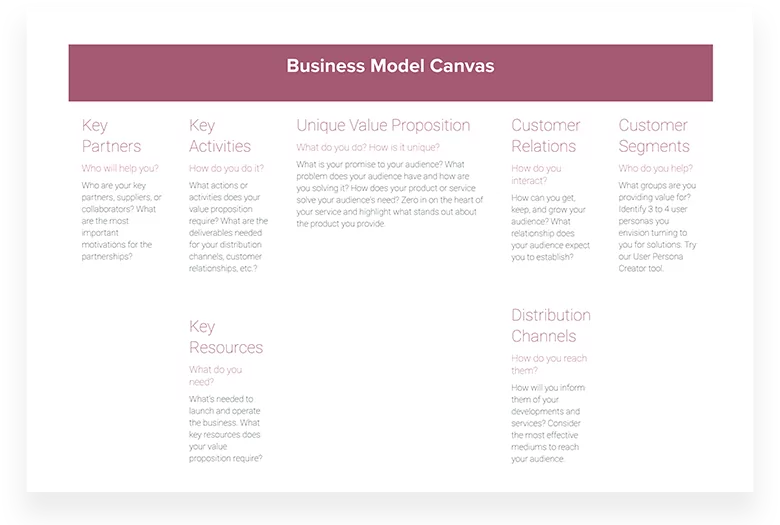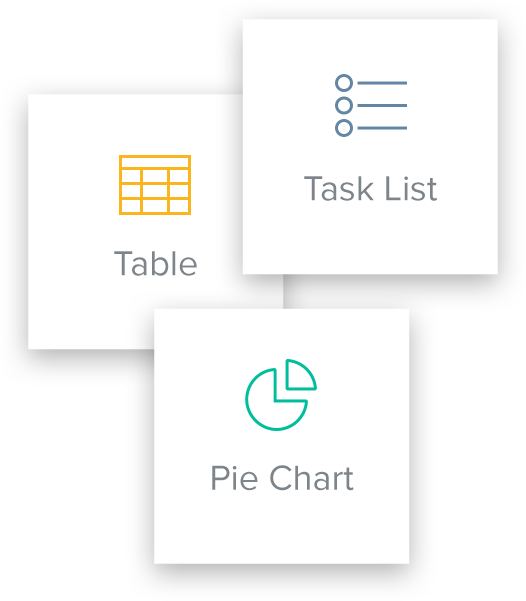Small Business SWOT Analysis Template
Use the Small Business SWOT Analysis template as a starting point to evaluate your own company’s Strengths, Weaknesses, Opportunities, and Threats. Click and edit.
Beautiful living documents, built like web pages.
Join 243,608 professionals using Xtensio.
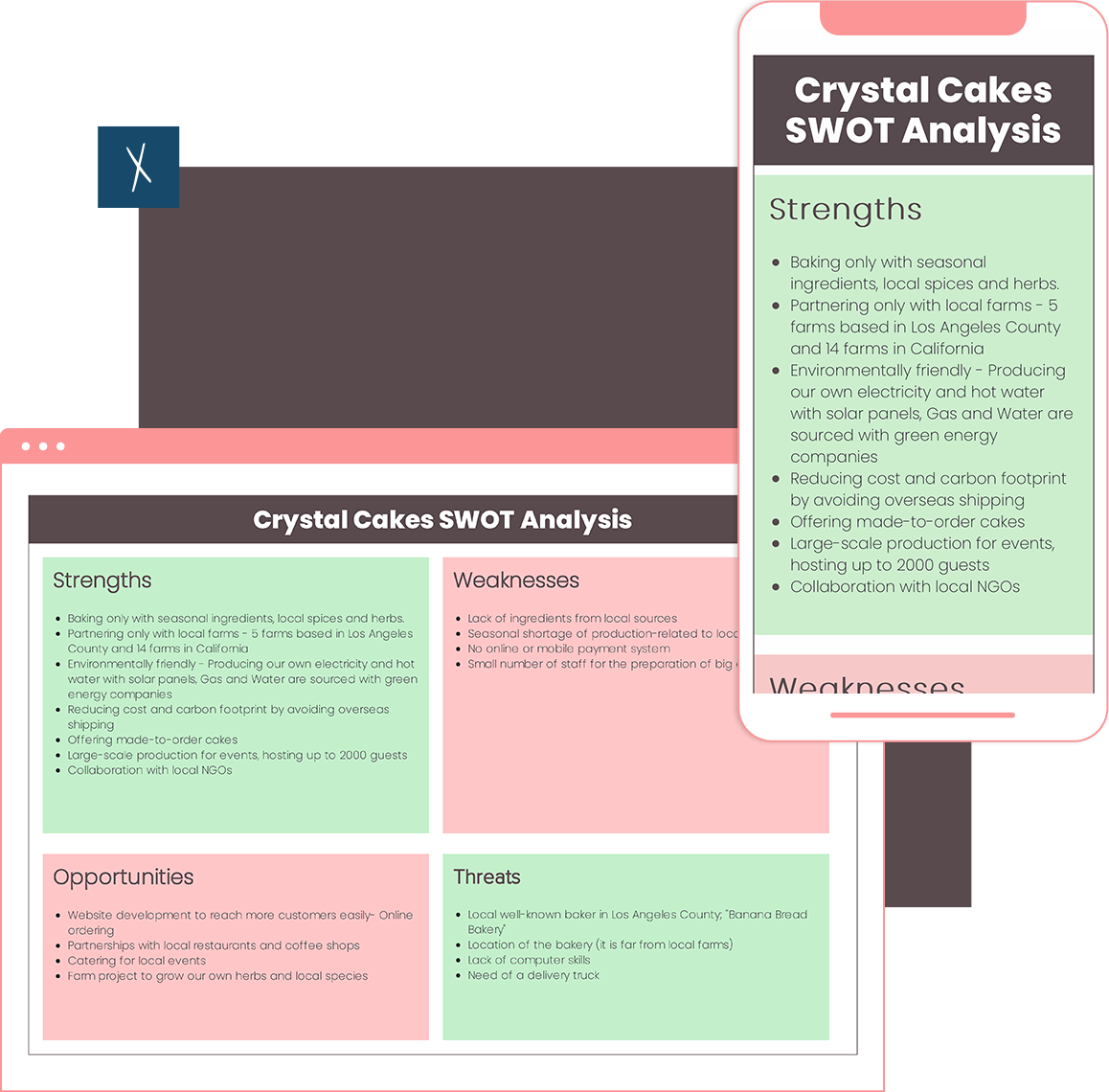
Beautiful living documents, built like web pages.
Join 243,608 professionals using Xtensio.
Take this editable SWOT Analysis Example for a Small Business as a starting point to generate your own company’s Strengths, Weaknesses, Opportunities, Threats. Click and edit. Free on Xtensio.
What is a Small Business SWOT analysis template?
The SWOT analysis is a basic method for identifying your organization’s strengths, weaknesses, opportunities, and threats. The SWOT matrix is useful for strategic planning and project management. This exercise allows you to examine both external and internal elements affecting your small business and capitalize on those that can assist your corporation in staying ahead of competition and planning for growth.
Your SWOT could be created with an Excel or Word template, but Xtensio’s free SWOT template gives you the freedom to explore the matrix visually with moveable modules and the ability to add images, videos, charts and graphs. This allows you to see company internal and external factors more clearly and outline a well-define strategy for the next steps.
What would you use a SWOT analysis for?
You can conduct a simple SWOT analysis for many different objectives, but defining the objective is the first step in conducting an effective SWOT analysis. You can use the analysis to make sure your company is aligned with your growth goals, or to evaluate individual projects within a single department.
How do I write a SWOT analysis?
You can read and follow along with our detailed guide on How to Do a SWOT Analysis here. To summarize; You should assemble a group of people from various departments inside your firm to ensure that you have representatives from all sectors of the business and all goods. Each group will have wholly distinct perspectives that are crucial to the success of your SWOT study.
Doing a SWOT analysis is like company brainstorming meetings, and there are right and wrong ways to run them. With Xtensio’s template, everyone can add their notes at their convenience and everyone will be in sync as it comes together.
Steps to inspire your analysis brainstorm:
- Determine your objective.
- Do your research: explore areas in your industry, market, competitors.
- Make a list of company strengths.
- Make a list of company weaknesses.
- Make a list of possible opportunities.
- Make a list of possible threats.
- Conclude your analysis with a well-defined internal strategy and steps for how you can take action. How will you use your strengths to overcome threats? How will you improve your weaknesses to take advantage of opportunities?
What are examples of strengths, weaknesses, opportunities and threats in a SWOT analysis?
Strengths and weaknesses are internal factors — these are things that you have at least some control over. Examples may include your product patents, intellectual property, technologies and resources, your location, your team. These factors should also highlight what your team and/or product does better than your competitors and things that your company lacks.
External factors are opportunities and risks that occur outside of your organization and in the bigger market. Opportunities can include a lack of competition in the area or a rising need for your product. Rising material prices and new competitors joining the market are two examples of dangers. You can seize opportunities and defend against threats, but you can’t change them.
Are there alternatives to the SWOT Analysis?
Yes. SWOT Analysis may not cover specific aspects of your strategic approach, or it may not be the best match for your business philosophy. We are curating some SWOT Alternatives to do business in a changing world.

XTENSIO TIP: Note that this is a hypothetical example and not an up to date market research document. This editable template will give you an idea of how your competitive analysis might look like. We always recommend you do your own thorough research to fill in the sections.
FAQ about the SWOT analysis Template
How do you write a SWOT analysis for a small business?
Writing a SWOT analysis for a small business involves identifying Strengths, Weaknesses, Opportunities, and Threats. Start by listing internal factors (Strengths and Weaknesses) and then external factors (Opportunities and Threats). Analyze your business’s capabilities, market trends, and competitors to get a comprehensive view.
Is there a SWOT template?
Yes, Xtensio’s SWOT templates are available online. These templates provide a structured format to help businesses easily identify and analyze their Strengths, Weaknesses, Opportunities, and Threats.
How do I create a SWOT analysis template?
You can start with Xtensio’s free template. To create a SWOT analysis template, divide a page into four sections. Label them as Strengths, Weaknesses, Opportunities, and Threats. Populate each section with relevant factors and insights. Xtensio offers pre-made free templates to simplify the process.
Why is SWOT analysis important for small businesses?
SWOT analysis is crucial for small businesses as it provides a clear snapshot of their current position. It helps in strategic planning, identifying growth areas, and addressing potential challenges.
How often should a small business conduct a SWOT analysis?
Ideally, a small business should conduct a SWOT analysis annually. However, it’s beneficial to revisit it whenever there’s a significant change in the market or business environment.
What are common strengths in a small business SWOT analysis?
Common strengths might include a dedicated customer base, unique products or services, strong brand reputation, or efficient operations.
How can small businesses address weaknesses identified in a SWOT analysis?
Small businesses can address weaknesses by investing in training, seeking expert advice, adopting new technologies, or re-evaluating their strategies.
Can SWOT analysis help in identifying new market opportunities?
Absolutely! SWOT analysis can highlight gaps in the market, emerging trends, or underserved customer needs, presenting potential opportunities for businesses.
What external threats should small businesses be aware of in a SWOT analysis?
External threats can include competitive actions, changing regulations, economic downturns, or shifts in consumer behavior.
Used by the world’s top businesses.
243,608 users and counting.



Grace Ghunaim
Global Chief Strategy Officer (CSO) @

David Nason
CEO/Founder @

Jeff Schenck
Marketing Manager @

Ryan Dobson
Global Engineering Manager @

Arthur van de Graaf
Founder @

Apurva Pathak
Technical Product Manager @

Jenny Johansson
UX Manager @

Zac Heisey
Director of Digital Marketing @

Jacklyn Swiecicki
Marketing Manager @
